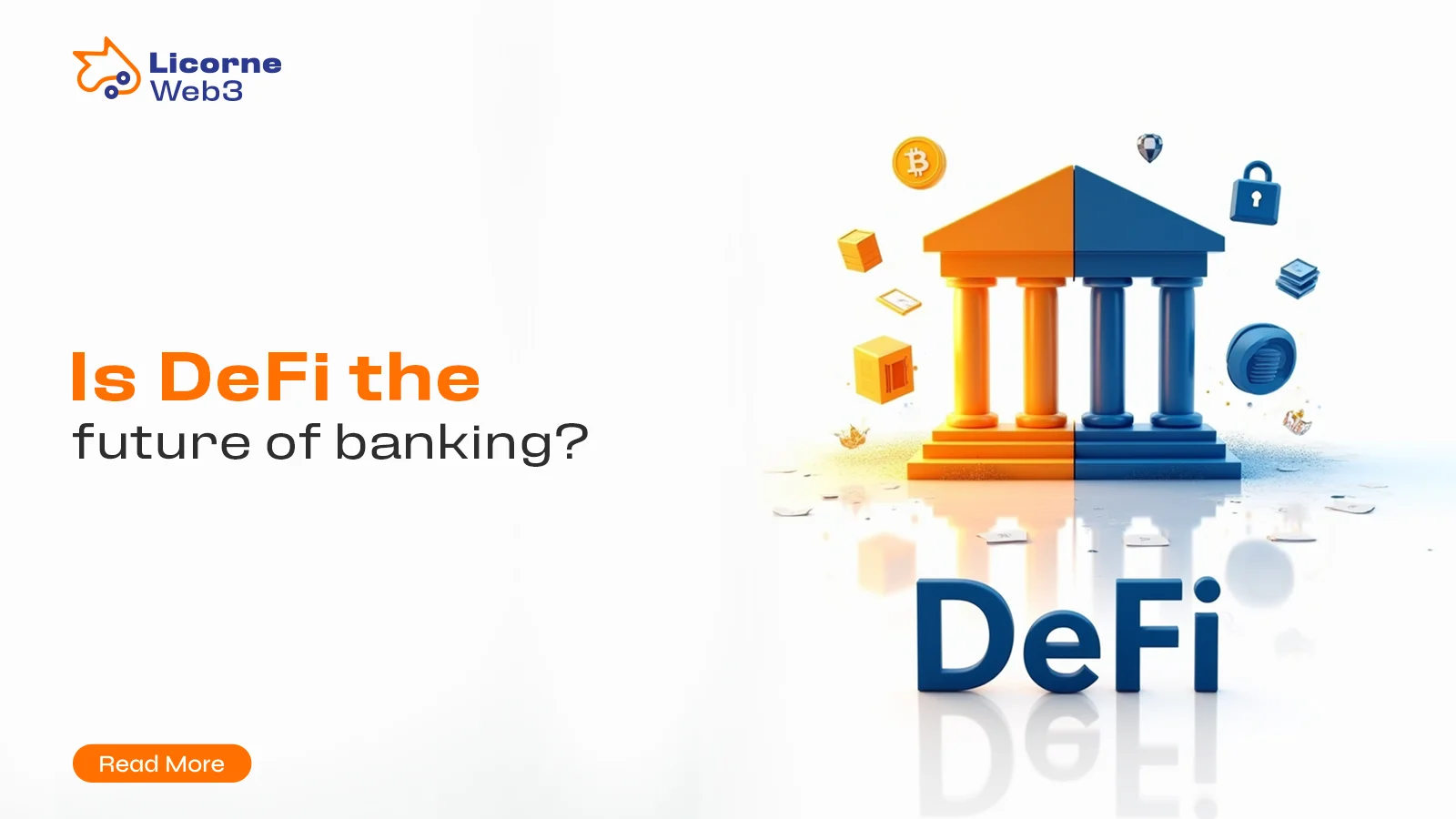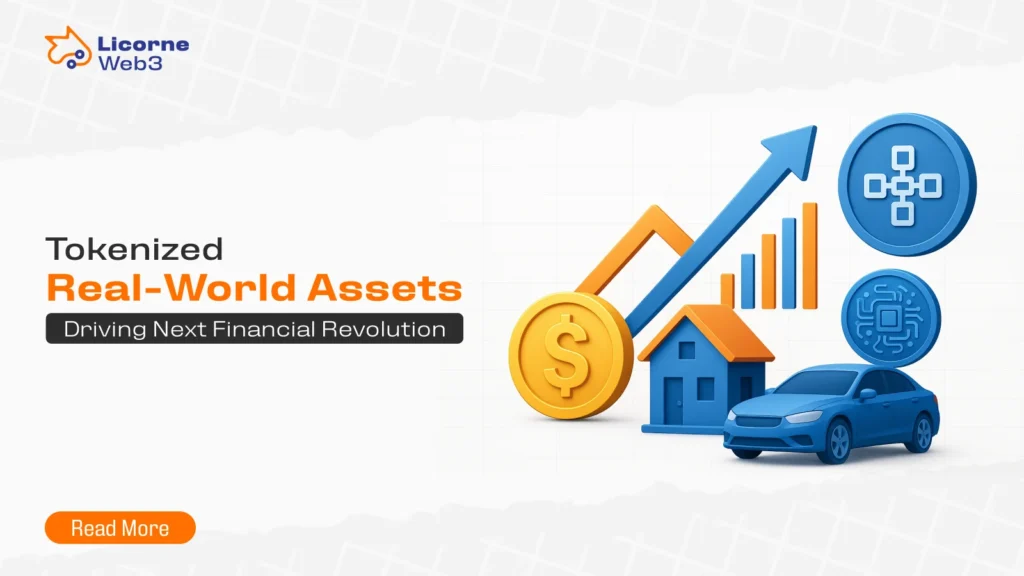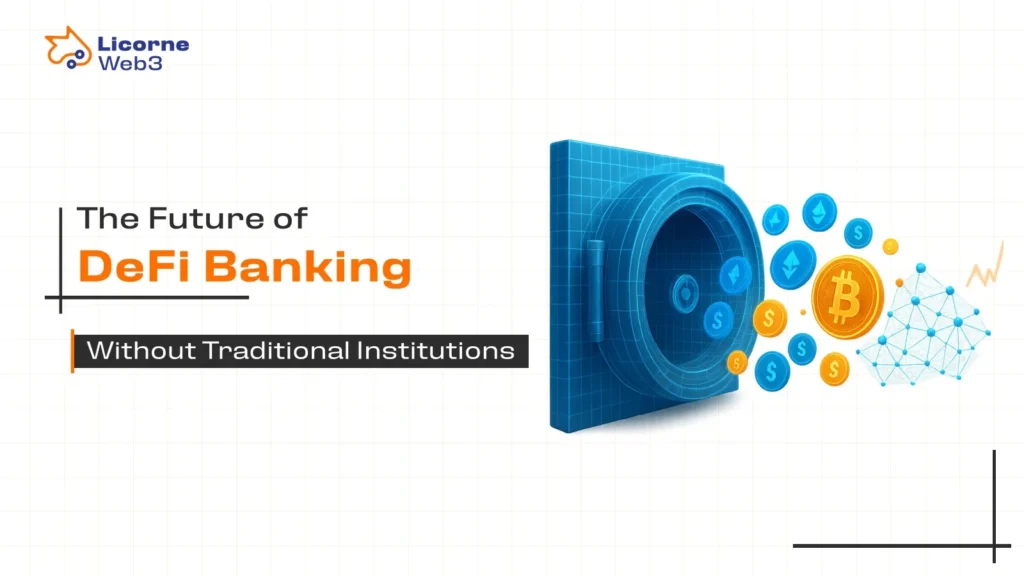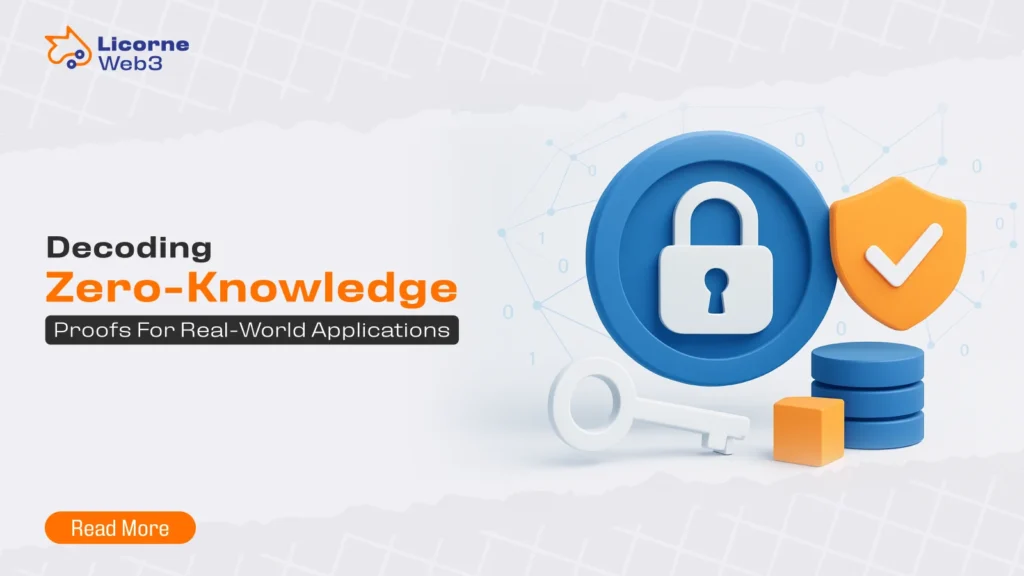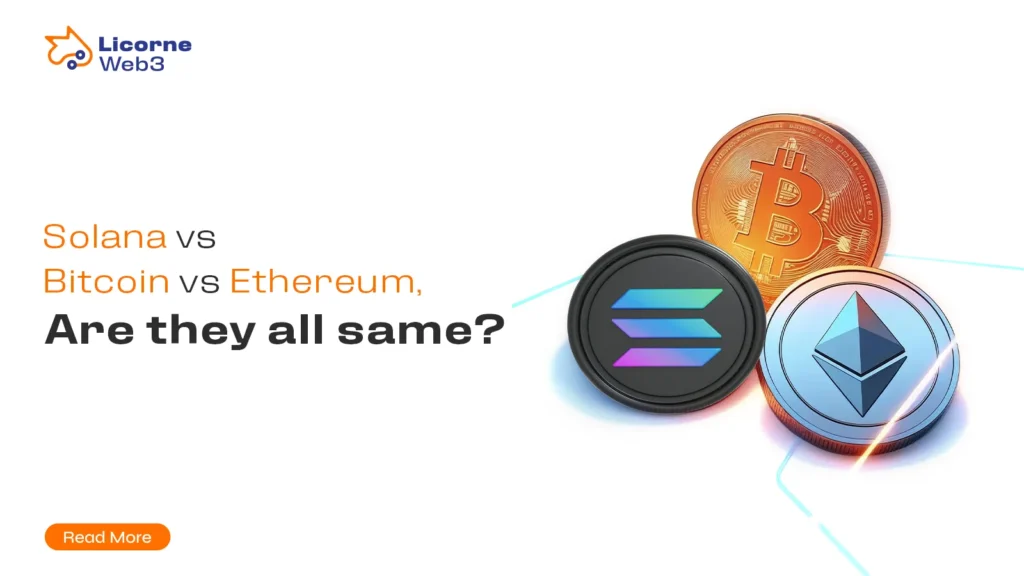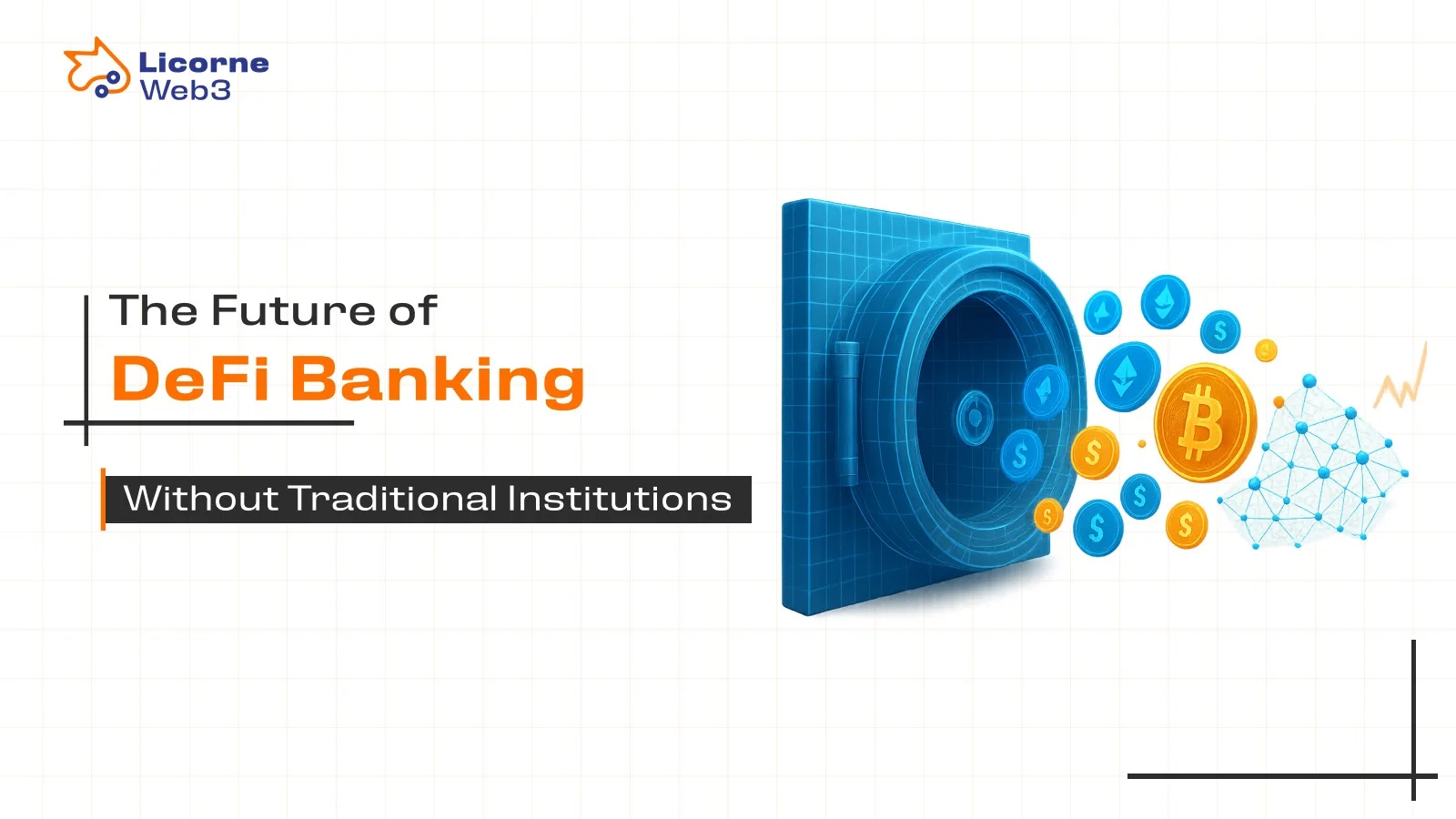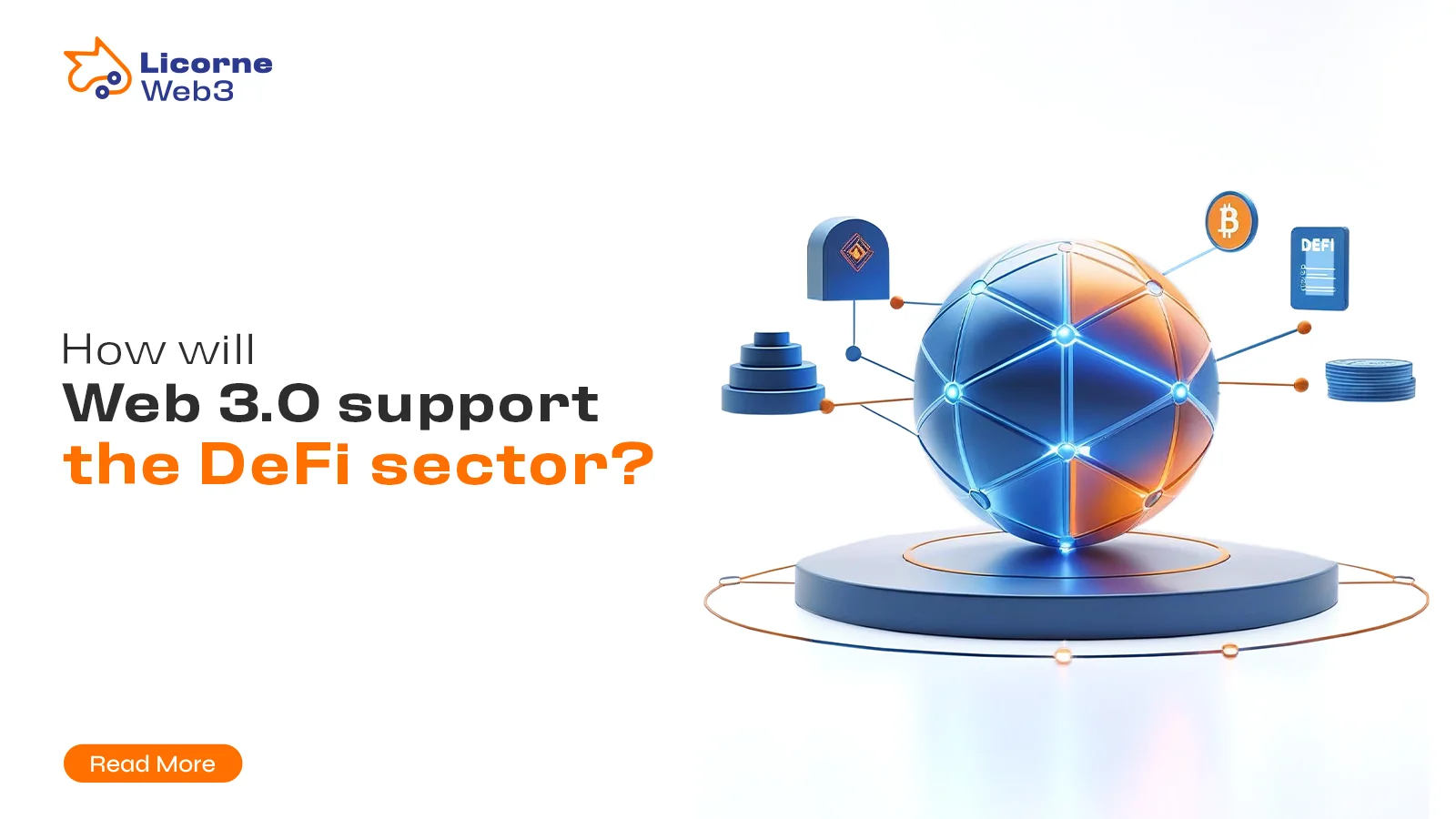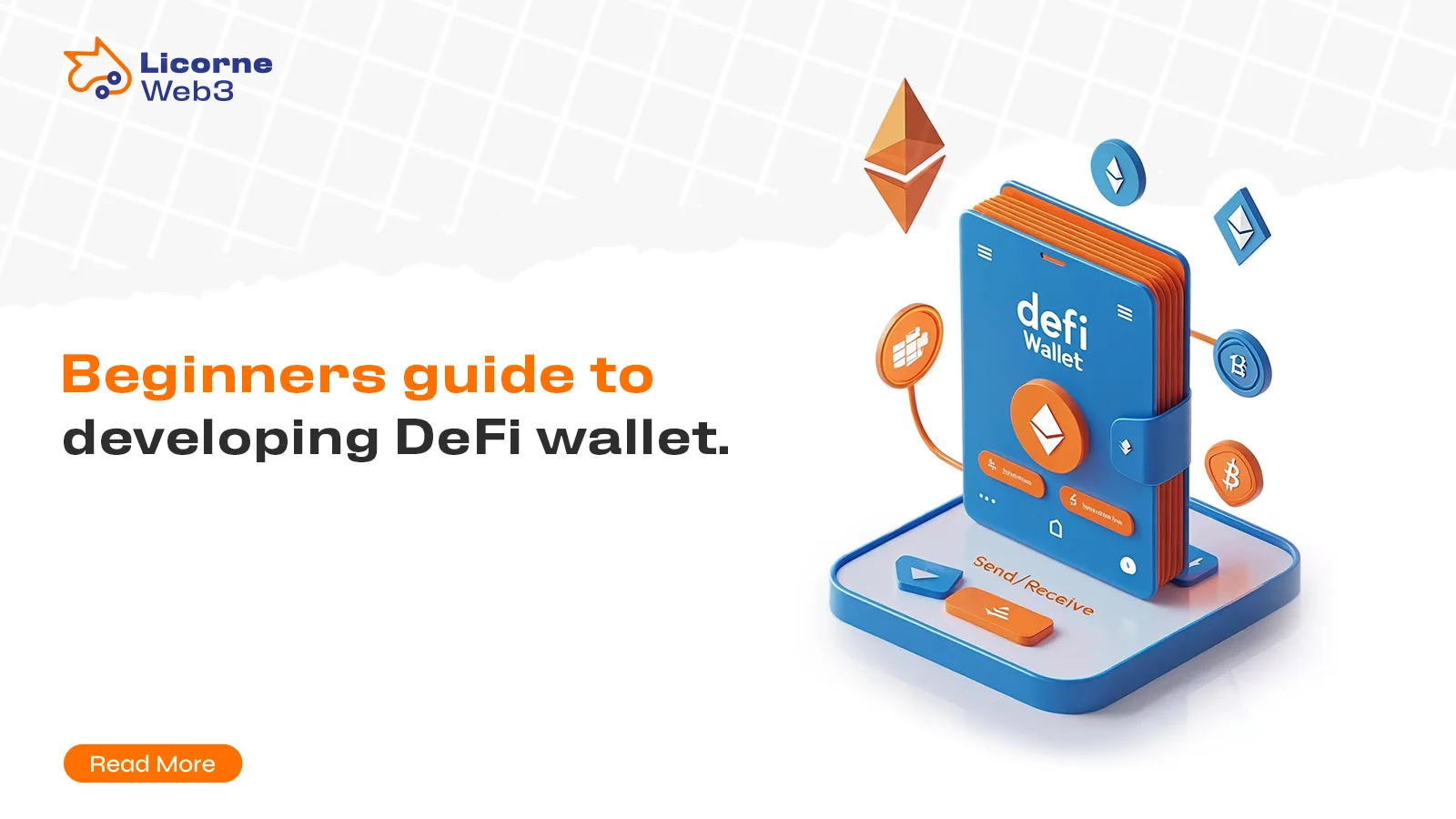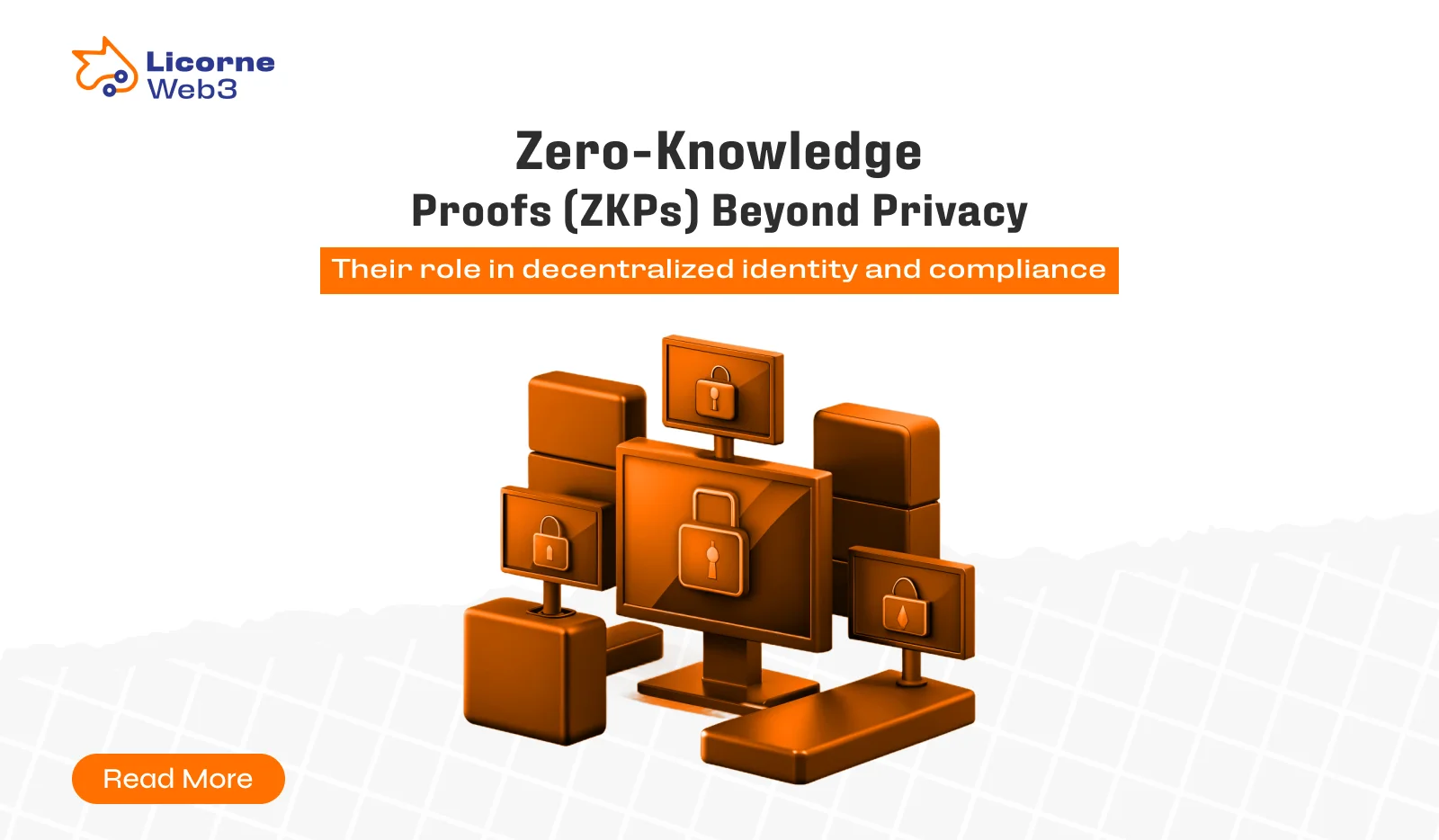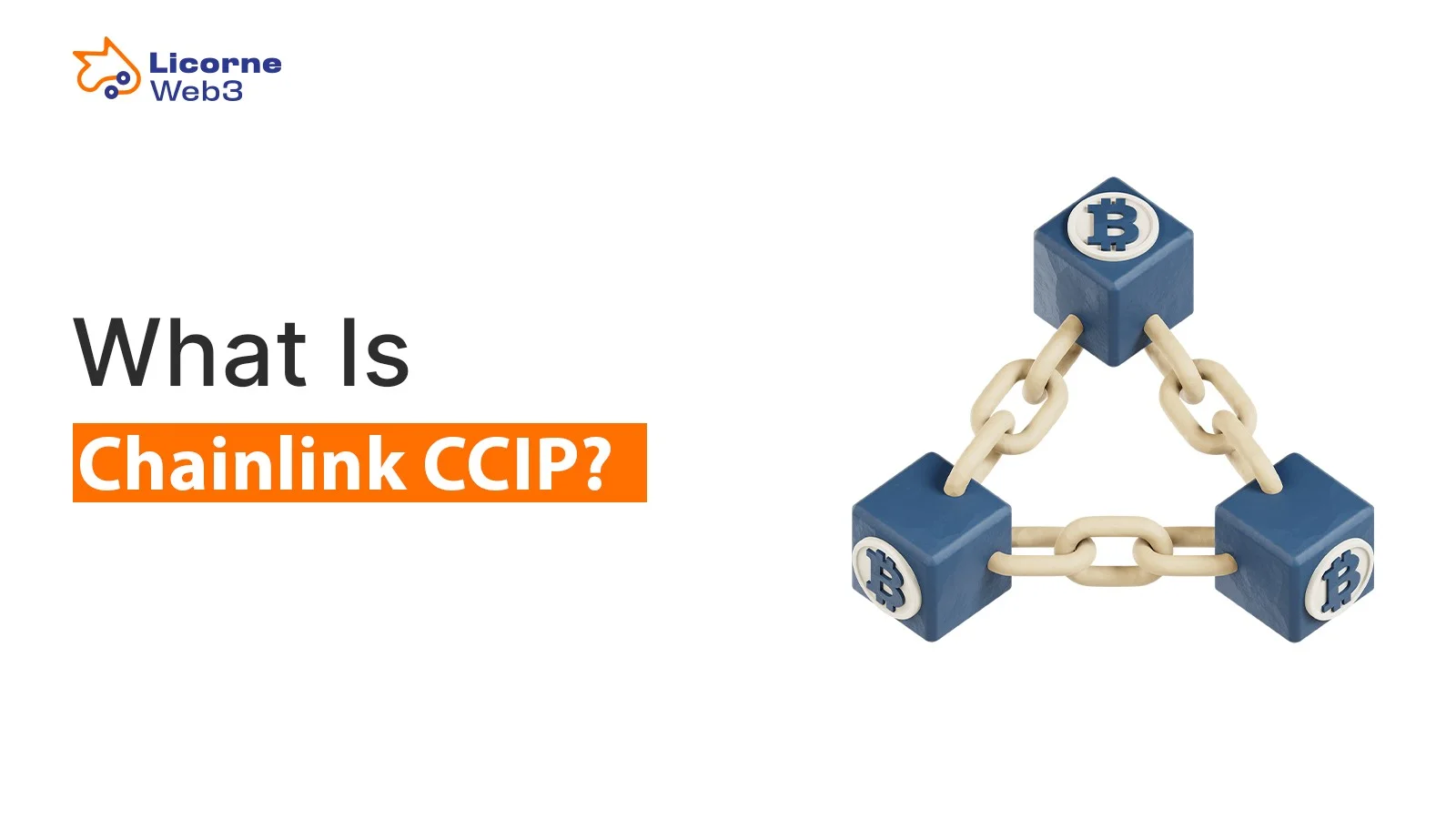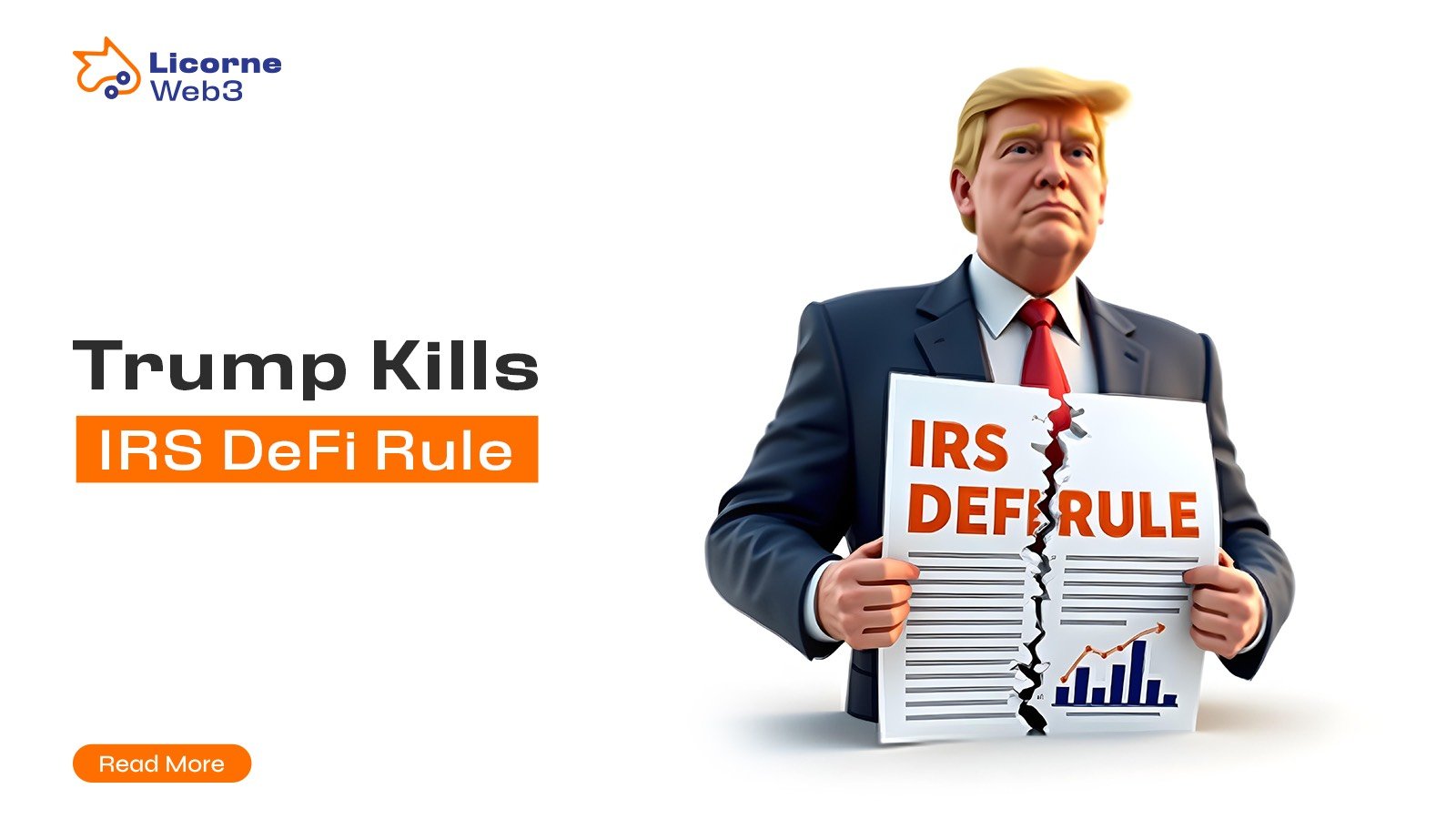There is a radical change in the financial world. The traditional banking infrastructure was once the engine of the global economic system; however, a new decentralized paradigm known as DeFi, or Decentralized Finance, is making a credible attempt to emerge as a viable alternative to the old, deflationary financial framework. The existing trend in the financial sector is decentralized finance (DeFi) that operates on blockchain and smart contracts that provide open, permissionless, and transparent parallels of the banking system that dates back centuries.
In this blog, we explore how Decentralized Finance (DeFi) is revolutionizing traditional banking by leveraging blockchain technology, smart contracts, and digital assets.
What Is DeFi?
DeFi is a blanket term intended to cover financial services that operate on blockchain networks and specifically public blockchain networks such as Ethereum. Unlike non-DeFi, however, DeFi does not involve intermediaries. Instead, they employ smart contracts, code chunks that automatically enforce rules and induce transactions. They offer services including lending and borrowing, insurance, trading, and asset management.
Basically, DeFi suggests the idea of empowering users, whereby they interact through decentralized applications (dApps) through digital wallets. In the peer-to-peer (P2P) networks, the activities are carried out on the populace ledgers, which guarantees transparency and irreversibility.
Components and Infrastructure of DeFi
DeFi encompasses a wide range of protocols and tools. Some key components include:
- Decentralized Exchanges (DEXs): Platforms like Uniswap and Binance DEX allow users to trade assets directly from their wallets using automated market makers (AMMs) and liquidity pools.
- Lending Protocols: Projects like Aave and Compound enable users to lend or borrow digital assets without a centralized authority.
- Stablecoins and Digital Assets: Stablecoins such as USDC and DAI provide price stability, while digital assets represent a wide variety of value, including tokenized real-world assets.
- Yield Farming and Liquidity Mining: Users can earn interest or governance tokens by providing liquidity to protocols.
- Flash Loans: Uncollateralized loans that are taken and repaid within a single transaction, an innovation unique to DeFi.
These tools together form the foundation of the DeFi ecosystem, enabling near-instant financial services with global accessibility.
The Role of Blockchain Technology
DeFi has its revolutionary properties via the decentralized, immutable nature of blockchain technology. All transactions are registered in a distributed ledger that minimizes the chances of fraud and allows observability. The security and the capacity to expand to varied scales are offered by protocols that run on Proof of Work or Proof of Stake systems.
Agent platforms such as Binance Smart Chain and Ethereum are still expanding, and they provide more reliable settings for DeFi projects. Another thing that is provided by the public blockchains is the fact that on-chain verification techniques allow the independent verification of the data.
The Importance of Smart Contracts
The DeFi system is based on a smart contract. These coded contracts automate complicated financial deals without the involvement of a human being. As an illustration, a smart contract in the lending platform would handle the automatic release of collateral in case a borrower defaults, which would enable trustless transactions.
Nevertheless, weaknesses of smart contracts are a threat. Millions of cryptocurrencies have been stolen through flaws in code and hacking, and exploitation. This threat picture introduces the necessity of regular audits, legal control, and better cybersecurity strategies.
Wallets, Private Keys, and User Control
DeFi users get complete ownership of their resources with the use of non-custodial wallets such as Trust Wallet and MetaMask. This means of control is accompanied by the responsibility, namely, one must protect his/her own key and seed phrase. A loss of access to these may lead to the irrevocable loss of finances.
These wallets bring the user directly to the DeFi protocols to execute a variety of actions that include staking and trading to engage in governance votes without the help of a third party.
Financial Inclusion and Democratization
The top strength of DeFi is the potential for financial inclusion. In the case of DeFi, anyone who possesses a smartphone and is connected to the internet can use the network, unlike in traditional banking systems, where some people who do not have any formal identification are locked out. What this implies is that citizens of underserved areas will be able to enjoy the benefits of digital payments, lending protocols, and even investment accounts.
In such a way, remittance solutions based on DeFi cut the costs of the transaction and processing time, which enhances the financial position of migrant workers and their relatives. Financial services are more equal and inclusive, motivating more participation in the economy.
Regulatory Uncertainty
In spite of the benefits, DeFi is in an unregulated environment. The main barrier to mainstream is regulatory uncertainty. There are concerns about how to enforce the current financial regulations on the decentralized system, given that they do not have a central authority.
The upcoming regulation in crypto assets (MiCA) upcoming regulation will attempt to give a uniform regulatory framework to digital assets in Europe. Globally, institutions are also evaluating DeFi’s potential and its integration within existing financial systems.
But until there is clarity on the legal front, the DeFi projects will have to be cautious. Regulation would be required to stop systemic risk, fraud, and money laundering, but should not undermine the more decentralized spirit of the space.
Comparing DeFi and Traditional Banking
Here’s how DeFi compares to traditional financial systems:
| Feature | DeFi | Traditional Banking |
| Accessibility | Global, permissionless | Region-specific, ID required |
| Control | The user retains the private key | Custodial model |
| Transaction Time | Near-instant | Can take days |
| Transparency | Public ledgers | Closed systems |
| Fees | Low (variable gas fees) | Often high and opaque |
| Security | Code-dependent | Regulatory protection (e.g., FDIC insurance) |
While DeFi lacks the formal protections of traditional banking, like FDIC insurance, it excels in efficiency, speed, and accessibility. However, without proper regulation and security, its risks remain high.
DeFi and Tokenized Real-world Assets
A growing trend in DeFi is the tokenization of real-world assets such as real estate, stocks, and bonds. These tokenized assets allow fractional ownership and can be traded 24/7, providing more liquidity than traditional assets.
Projects like Robinhood and platforms built on Binance Smart Chain are experimenting with offering tokenized versions of publicly traded stocks. This creates new opportunities for portfolio diversification and wealth building.
Security Concerns and the DeFi Threat Landscape
DeFi’s openness is both a strength and a weakness. Protocols are often targeted by malicious actors exploiting bugs in smart contracts. Security breaches, hacks, and exploits have led to high-profile losses.
To mitigate these threats, the industry is investing in:
- Audit newsletters and third-party audits
- Multi-party computation (MPC) for better private key management
- Biannual analysis and threat assessments
- Collaboration with cybersecurity experts and legal advisors
The development of a more resilient DeFi security infrastructure will be crucial for its sustained growth.
Market Dynamics and User Adoption
The trading of cryptocurrencies is still volatile. End-users’ behavior is considerably impacted by such factors as cryptocurrency prices, market depth, and yield/market rates. The amount of value locked up in DeFi protocols (TVL) has usually been used as a transparency metric of confidence and adoption.
However, as awareness is growing and fintech investments are rising, retail and institutional interest in DeFi keeps climbing. Such companies as Unstoppable Finance and such influencers as Peter Grosskopf are busy creating the discourse about DeFi advantages.
A Hybrid Model: Coexistence Over Competition?
Rather than viewing DeFi and traditional banking as adversaries, many industry leaders are exploring a hybrid model that leverages the best of both worlds. This might include:
- Multi-Family Office Services incorporating DeFi yields
- Digital identity integration for KYC-compliant DeFi usage
- Partnerships between legacy banks and DeFi platforms to provide broader financial services
This hybrid approach could lead to more comprehensive and inclusive financial systems, blending the stability of traditional banking with the innovation of DeFi.
Challenges to Mass Adoption
Despite its potential, DeFi must overcome several hurdles:
- Gas fees can be prohibitively high during network congestion
- User experience (UX) still requires technical knowledge
- Lack of regulatory clarity and compliance tools
- Threats of security breaches and fraud
- Education gaps around seed phrases, private key management, and DeFi functionality
Addressing these issues will be vital to onboarding the next billion users.
The Future of Banking: Decentralized or Integrated?
The question isn’t whether DeFi will replace banks, but how it will redefine the financial landscape. As site functionality, targeted advertising, and fintech tools evolve, DeFi could become a central pillar of the global financial system.
Institutions like the Forbes Business Council are already investing resources to understand and integrate DeFi. With increasing attention from regulators, legal advisors, and cybersecurity experts, DeFi is steadily moving from the fringes to the mainstream.
Final Thoughts
Will DeFi be the future of banking? These are indications that it is all towards a more decentralized world as far as finance is concerned. Both as the dominant model and as the one coexisting with traditional banking, DeFi is not going away.
It provides a powerful alternative that is based on transparency, efficiency, and inclusiveness. It should, however, change to cover its shortcomings, especially in terms of regulation and security.
I wonder: will DeFi become a real revolution in banking, or will it be just a system of parallel banking with its supporters?
Author
-

I am a content writer with a passion for creating engaging content. I aim to simplify complex topics for readers through writing. With a keen interest in blockchain and crypto, I strive to foster understanding and empower readers to explore new ideas!
View all posts


